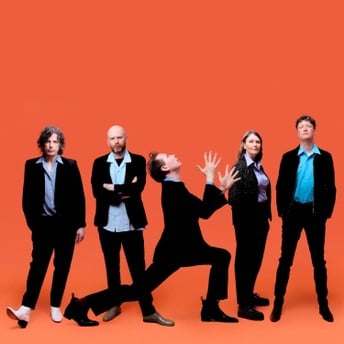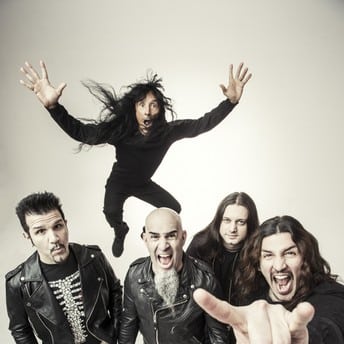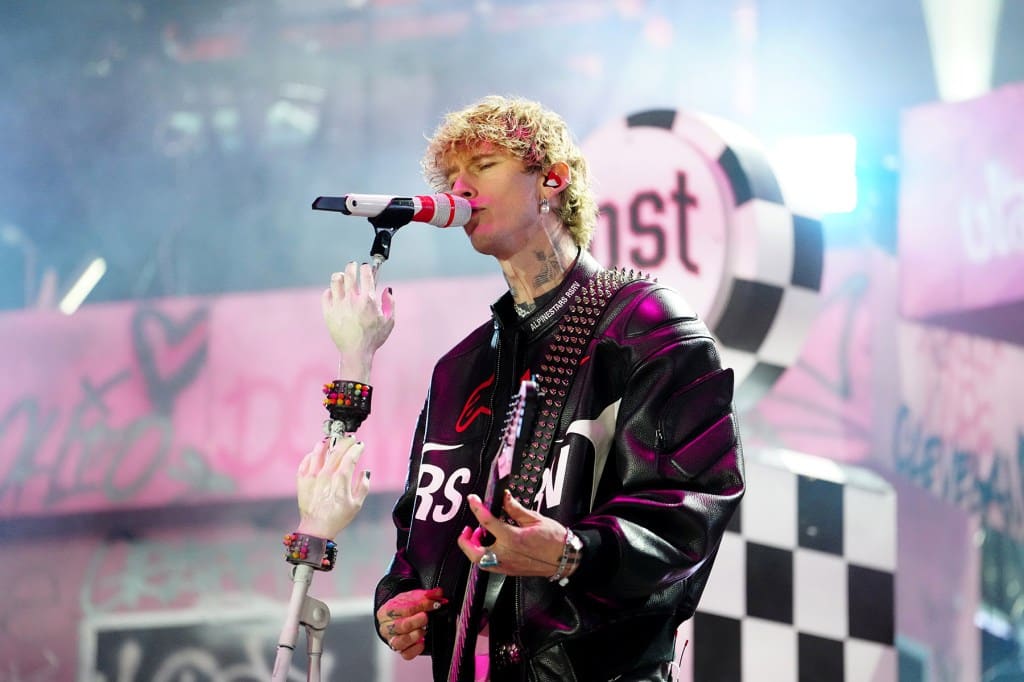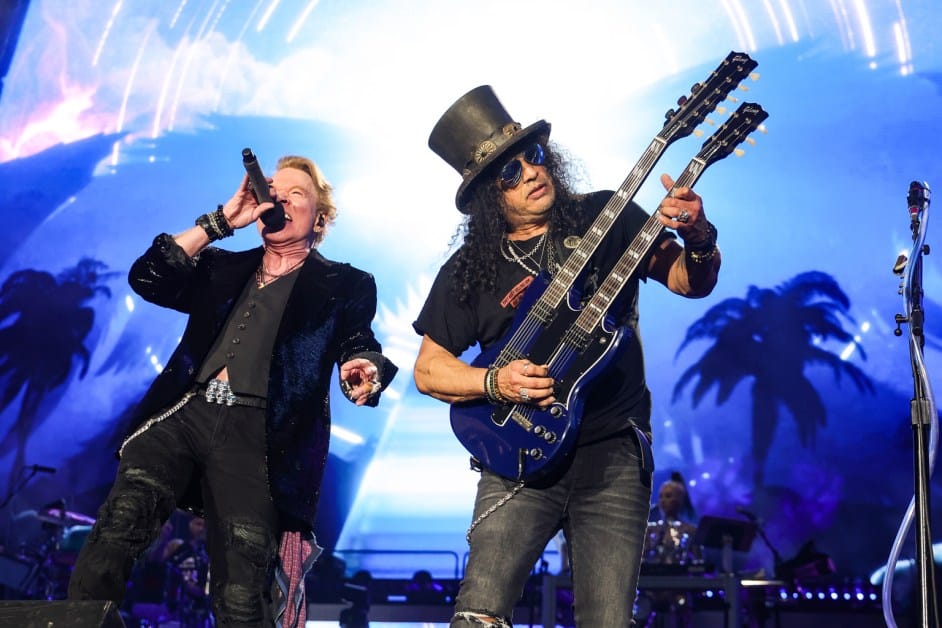Rock
Page: 2
Trending on Billboard
Franz Ferdinand and Donald Trump share almost nothing in common, apart from their Scottish heritage, and an unexpected interaction on social media.
The alternative rock outfit is currently in Australia for a national tour, kicking Wednesday, Nov. 26 at Red Hill Auditorium in Perth, Western Australia, and visiting Brisbane, Thirroul and Melbourne, before wrapping up in Sydney.
As the “Take Me Out” singers bang the drum for those dates, frontman Alex Kapronos stopped by Triple M for a chat with WA-based breakfast show hosts Robbie & Carly.
Explore
See latest videos, charts and news
Conversation, naturally, turned to the weather — where the band has come from, and the blazing heat they’ve arrived in — and the political climate.
The band penned the 2016 track “Demagogue” when Trump was still a candidate for the presidential election, which he went on to win, against most political observers’ predictions.
With “Demagogue,” Franz Ferdinand proved once more that Scots don’t mince their words.
“From the wall straight to la cuenta/Those pussy grabbing fingers won’t let go of me now,” the sing early on. And later, “From the mob to chapter eleven/Those tiny vulgar fingers on the nuclear bomb.”
When asked the band had heard from Trump’s camp, Kapronos quipped: “He’s a sensitive chap, isn’t he? When we wrote that song, he was only just going forward as a candidate. We were writing from the perspective of, ‘Oh God, imagine if…’ And here we are… we don’t need to imagine anymore.”
Kapronos “didn’t hear anything back from him personally, although years ago he replied to a tweet of mine, which was bizarre,” he reveals. Also, one of Trump’s daughters “crashed backstage at one of our shows back in 2004,” he recounts. “It was like, ‘Who’s this woman in our dressing room?’”
The band has begun their tour down under at the best possible time. “We left a very rainy, cold, dark Europe to come to a beautiful springtime Australia — and you feel that energy,” Kapronos remarks. “It lifts you up. Even if you’re hungover or jet-lagged, the energy of the crowd is transformative.”
Also, Kapranos notes, the group’s Perth show will something of a family affair. “My sister’s husband is a Perth boy, so we know quite a few folk here. I think we’ve got a guest list of 60! Perth feels like nowhere else on earth: the trees, the plants, the wildlife, it’s so unique.”
Formed in Glasgow in 2002, Franz Ferdinand has landed seven U.K. top 10 albums, including a No. 1 with 2005’s You Could Have It So Much Better, and scooped best British group and best rock act at the BRIT Award in the same year.
Their U.S. chart story includes two hits on the Billboard Hot 100, and five appearances on the Billboard 200, including two top 10s.
Stream the Triple M interview here.

Trending on Billboard
The Oasis Live ’25 tour is a bit like a iceberg: what you see above the water doesn’t always match up with what’s hiding under the surface. For evidence just look at tour video director Jon Shrimpton’s celebratory post on Monday (Nov. 24), when he reminisced about the globe-trotting outing that wrapped up in Brazil on Sunday (Nov. 23) after 41 sold-out show on five continents.
“And there it was…. gone!…. after 14 months of pre-production, lots of well kept secrets, and 5 months of some of the most incredible sights and sounds I’ve ever seen at a stadium show, here we are,” Shrimpton wrote, revealing that plans for the shows were well along on their way last September, just weeks after the group shocked the world by announcing that they were reuniting after a 16–year break.
While Shrimpton didn’t divulge what “secrets” he was referring to, he did rave about the results of the tour that brought out rapturous, bucket hat-wearing hordes who lustily sang along to every note and reveled in the chance to hear “Wonderwall” and “Champagne Supernova” live again, or possibly for the first time.
“The last night of the … it would be fair to say; culturally and financially successful Oasis Live ‘25 world tour, tonight, in São Paulo,” he wrote from Estádio do Morumbi in São Paulo, Brazil in the post featuring images of the tour’s crew and a wild behind-the-scenes peek at what the shows looked like from his perch featuring more than a dozen feeds he pumped out to the massive screens spanning the stage.
“A genuine career high point here, being the video director on this momentous event. Travelling around the world, in the eye of the storm,” Shrimpton wrote. “I’ve been genuinely honoured to work with the most incredible, talented, ego-free, happy crew that has ever been assembled, and there’s been nothing but love from everything I’ve seen written about the show…. even in the British press.”
And while Shrimpton hinted that the tour was in the works well before fans heard a peep about it, the NME noted that some enterprising fans on Reddit did the math and speculated that the 14 months of pre-production meant the plans for the reunion were in the works by May or June of last year, several months before the announcement.
One user even accused singer Liam of being even cheekier than usual when he went out on his June 2024 arena tour celebrating the 30th anniversary of the band’s debut, Definitely Maybe. “Thinking about all those interviews where Rkids [Liam] fooled me [into] think[ing] they still didn’t talk to each other… good actors,” read one comment about the singer’s continuation of the charade that he and his older brother were still not on speaking terms after their rancorous 2009 split.

Trending on Billboard
In much the same way that Oasis spent more than a decade and a half swearing that they would never play together again, now it seems like they can’t wait to go back out on the road for another run. The group wrapped up their massive Live ’25 reunion tour in Brazil on Sunday (Nov. 23) after playing 41 sold-out shows on five continents.
The first gigs in 16 years from formerly battling brothers singer Liam Gallagher and guitarist/songwriter Noel Gallagher were rapturously received and left fans begging for more. So it’s been a bit of a roller-coaster ride trying to figure out if there actually are additional shows in the offing. While the band has not officially announced any 2026 plans, Liam has been dropping Easter eggs that have begged more questions than they’ve answered.
Earlier this month he wrote “I know things you don’t” on X after earlier teasing that “it’s not even half time yet,” before admitting that there was a “few tuts and raised eyebrows” when he’d earlier told fans that he would see them next year. And then he was more succinct when a commenter asked for just one word on a potential 2026 tour: “No,” he answered.
That definitive shutdown seemed to be confirmed on Tuesday (Nov. 25) when the band posted a series of pics from the tour with the message “there will now be a pause for a period of reflection.”
And then Liam eased the door open a bit, again.
Responding to a number of X comments pressing him on when Oasis will tour again and if the first swing’s rigid setlist might loosen up the next time around, Liam spread a little holiday joy with another seeming hint of what’s to come. “There’s loads more classics we need to play for you when we go out again I mean happy Christmas,” Gallagher wrote on Tuesday.
When one of them proposed an alternate setlist with some of the favorites that were missing the first time around, Gallagher gave a thumbs up to a few of the ideas, writing, “Defo doing ‘Hindu Times’ ‘Colombia’ and ‘Go let it out’ I mean happy Christmas,” he said.
The hits kept coming, as a fan speculated that they felt like “a new album is coming and you’re just hiding it really well.” Liam wasn’t quite as jovial about that one, responding, “It’s not I honestly do t see the point it won’t be as good as the old stuff im quite happy singing the old stuff I’m not 1 of those WANKERS that need to keep pushing it forward or sideways or backwards in some cases NOSTALGIA forever.”
In case you missed his point, he added, “New music is for WANKERS.”
So, to recap: absolutely no new music, a definitely maybe setlist shakeup and more dates for sure, unless not.
Trending on Billboard
Sublime are getting into the festival game. The long-running reggae punk band announced the debut of their first-ever touring festival, Sublime Me Gusta, which is slated to debut in Forth Worth, Texas on May 9 at the Panther Island Pavilion. According to a release announcing the event, the “beginning of a national festival series built around the timeless sound, spirit and cultural impact” of the band takes its name from the lyric “Me gusta mi reggae, me gusta punk rock” from the trio’s iconic song “Caress Me Down” from their 1996 self-titled debut album.
Explore
See latest videos, charts and news
“The festival embodies everything Sublime stands for: sun-soaked vibes, rebellious spirit, and a love for music without boundaries,” reads the release. Tickets for the festival start at $89.99 for general admission and are available here now.
“It’s always been our dream to put on a Festival for our friends and family,” says Sublime singer Jakob Nowell, son of the band’s late, original singer Brad Nowell. “It’s punk rock, hip hop, reggae, surf — all facets of true west coast alternative culture that has been kept alive for generations by fans and musicians alike. This is our era now and we got nothing but love for everyone coming with us.”
The band will be joined on the bill by their longtime friends in fellow reggae punk band Slightly Stoopid for what is described as an “immersive day of live music, community and good vibes.” A full festival lineup will be announced in the coming weeks. The event is being co-produced by Sublime and independent promoter Brew Ha Ha Productions.
A second stop in Oregon on June 27 has also been announced, though a city and venue were not revealed at press time. Each show will feature a hand-picked lineup of bands that bridge the punk-reggae gap, with the promise of a full day of music, vendors, art, food and drinks.
“As someone who lives in the Dallas-Fort Worth area, I couldn’t be more excited to launch the first-ever Sublime Me Gusta Festival right in our own backyard,” event co-producer Cameron Collins of Brew Ha Ha Productions said in a statement. “Sublime and Slightly Stoopid are two of the most influential bands of our generation and bringing them together for this new festival is something truly special. Fort Worth is the perfect place to kick off Sublime Me Gusta, and we can’t wait to share the full experience with everyone.”
Sublime was formed in Long Beach, Calif. in 1988 by singer/guitarist Nowell, bassist Eric Wilson and drummer Bud Gaugh. The band’s self-titled third album was released two months after 28-year-old Nowell’s death from a drug overdose, peaking at No. 13 on the Billboard 200 album chart. The band broke up in 1996 following Nowell’s passing and reformed in 2009 with fan Rome Ramirez taking over vocal/guitar duties, changing their name to Sublime With Rome.
Gaugh, who had split in 2011, rejoined the band in 2023 when Jakob Nowell took over as lead singer, followed by the dissolution of Sublime with Rome in 2024. In May of that year the band released their first new song in almost 28 years, “Feel Like That,” followed by the single “Ensenada.” Earlier this year, Sublime revealed that Nowell has been in the studio with Blink-182 drummer/producer Travis Barker and producer John Feldmann writing songs for the trio’s first new full-length album in three decades.
Check out the Sublime Me Gusta festival poster below.
Trending on Billboard
Anthrax will return to Australia in March 2026 for four shows across Brisbane, Adelaide, Melbourne and Sydney, Live Nation announced Tuesday.
The run marks the thrash-metal veterans’ first Australian headline tour since 2019, extending a global touring period that has seen the band revisit material spanning more than four decades.
Hailing from New York and widely regarded as one of the “Big Four” of thrash alongside Metallica, Slayer and Megadeth, Anthrax have sold more than 10 million albums worldwide and remain one of heavy music’s most enduring live acts. Their 2026 Australian dates will feature a career-spanning setlist mixing fan favorites, deep cuts and selections from the band’s more recent catalog as they continue celebrating their legacy on the road.
Explore
See latest videos, charts and news
According to the announcement, the tour will kick off March 23 at Fortitude Music Hall in Brisbane before moving through Adelaide’s Hindley Street Music Hall on March 25 and Melbourne’s Festival Hall on March 26. The run will wrap March 28 at Enmore Theatre in Sydney. It marks the group’s return to all four cities after several years of international touring and festival performances.
Tickets go on sale Nov. 28 at 11 a.m. local time. A Mastercard presale runs Nov. 26 from 11 a.m. until Nov. 28 at 10 a.m., with additional Live Nation presale access beginning Nov. 27 at 11 a.m. and concluding Nov. 28 at 10 a.m. All times are local.
Anthrax has also finished mixing its forthcoming studio album, marking the band’s first full-length release in nearly a decade following 2016’s For All Kings, with drummer Charlie Benante confirming the milestone via Instagram on Nov. 24.
Key recording sessions and all final mixing took place at Dave Grohl’s Studio 606 in Northridge, California — a space long associated with major hard-rock productions. The band reunited with producer Jay Ruston, who previously oversaw For All Kings and 2011’s Worship Music, bringing continuity to the project as Anthrax enters its next era.
More information is available at livenation.com.au.
Anthrax Australian Tour dates:
March 23 – Fortitude Music Hall, BrisbaneMarch 25 – Hindley Street Music Hall, AdelaideMarch 26 – Festival Hall, MelbourneMarch 28 – Enmore Theatre, Sydney
Trending on Billboard MGK compared his sexual performance to that of an F1 driver during a Las Vegas Grand Prix show, and the hilarious clip is going viral. Originally shared by The Daily Mail, the rapper and singer made the crass joke before playing his song “Bloody Valentine” from his 2020 Billboard 200-topping album Tickets […]
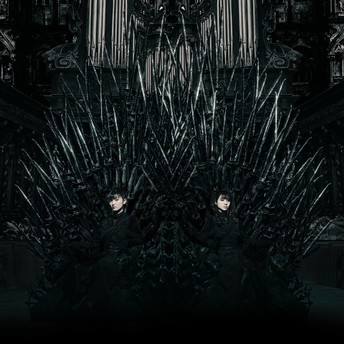
Trending on Billboard
Japanese heavy metal band Babymetal made history at Intuit Dome in Los Angeles on Nov. 1, performing its largest North American show to date in the group’s only arena concert of 2025. Such large-scale shows are common in the band’s home country, but American audiences were treated to a special in-the-round stage and pyrotechnics-filled production in support of the band’s fourth album, Metal Forth (released in the U.S. through Virgin Music Group).
Explore
See latest videos, charts and news
The setup was as impressive as the milestone itself. The fire-spewing square stage was rotated 45 degrees, creating a diamond with edges that nearly touched the arena’s four sides. That put the band — Su-metal, Moametal and Momometal, plus two guitarist, a bass player and drummer — in close proximity to its adoring fans. “We set up the stage right in the center of the venue so that the audience could see the performance from 360 degrees,” Su-metal tells Billboard’s Behind the Setlist podcast. “It turned out exactly the kind of show we’ve always wanted people outside Japan to see.”
The 15-song set spanned Babymetal’s catalog, opening with “BABYMETAL DEATH” and touching on “from me to u” and “Distortion” before “PA PA YA!!” sent the crowd into pandemonium. Intuit Dome’s halo-shaped video screen that hovers over the floor added to the sensory overload by showing images and video of studio collaborators such as Indian rapper Bloodywood, who came to life during a memorable performance of “Kon! Kon!” from Metal Forth.
A surprise came about two-thirds into the set when Babymetal was joined on stage by Spiritbox’s Courtney LaPlante, who recreated the ferocious singing on “My Queen” that makes the collaboration a highlight from Metal Forth. The song is typical of the Babymetal’s intention to go “beyond metal,” as the band has said in previous interviews, by mixing genres and filling Metal Forth with collaborations with Bloodywood, Rage Against the Machine’s Tom Morello, Electric Callboy, Spiritbox, Poppy and Slaughter to Prevail. “Our foundation is metal, of course, but we want to combine even more diverse musical styles to forge a new path only we can create,” explains Momometal.
The three-song encore featured “The One,” “Headbangeeeeerrrrr!!!!!” and “Road of Resistance.” The uplifting “The One,” from the 2016 album Metal Resistance, prompted fans in a mosh pit to lock arms, create a huge circle and sway from side to side. The song stands out in Moametal’s memory of the concert. “During ‘The One,’ cheers from the audience were so loud it felt like the ground was shaking,” she says. “My heart just exploded with joy.”
Listen to Behind the Setlist’s entire interview with Su-metal, Moametal and Momometal using the embedded Spotify player below, or go to Spotify, Apple Podcasts, Amazon Music, iHeart, Podbean or Everand.
11/24/2025
The new songs, the band’s first since 2023’s “The General,” are due out on Dec. 2.
Trending on Billboard
Billy Corgan debuted the long-anticipated operatic adaptation of Mellon Collie and the Infinite Sadness on Fri., Nov. 21, with the Smashing Pumpkins leader performing on opening night at the Lyric Opera of Chicago.
Explore
See latest videos, charts and news
The new production presents a symphonic and operatic reimagining of the band’s 1995 double album, which debuted at No. 1 on the Billboard 200 and marked a defining moment in the group’s commercial peak. Across the evening, selections including “Tonight, Tonight,” “1979,” and “Bullet With Butterfly Wings” were transformed for a full operatic cast and orchestra.
Corgan appeared as a featured vocalist throughout the performance, joined by soprano Sydney Mancasola, mezzo-soprano Zoie Reams, tenor Dominick Valdés Chenes and baritone Edward Parks. The Lyric Opera Orchestra and Chorus performed under conductor James Lowe, who has been one of Corgan’s key collaborators in reworking the score for the stage.
In a previous statement, Corgan said the process allowed him to reconsider the album nearly 30 years on. “It is thrilling to collaborate with Lyric head John Mangum, my musical partner James Lowe, and all of the artists at Lyric in reimagining this very special and historic album, and to discover how Lyric’s full operatic treatment is helping me experience my own compositions in powerful new ways,” he said.
“Opera and rock both tell stories of heightened emotions, and I am excited for both fans of my music and traditional opera fans to hear some truly inspired work; for the balance here is to honor both traditions in a magisterial way.”
Originally released in Oct. 1995, Mellon Collie and the Infinite Sadness earned seven Grammy nominations, including album of the year. It produced two of the band’s most enduring singles with “1979” (which peaked at No. 12 on the Billboard Hot 100) and “Bullet With Butterfly Wings,” the latter winning the group a Grammy for best hard rock performance. The album remains one of the Smashing Pumpkins’ most critically and commercially significant projects, certified diamond by the RIAA.
The Lyric Opera production continues its limited run in Chicago through the coming week.

Trending on Billboard
A week after announcing his retirement from music, Whitesnake singer David Coverdale, 74, added an emotional coda to his nearly six-decade music career. The group released the moving music video for a remix of the title track from the band’s 2011 album, “Forevermore,” produced by the singer and featuring a new orchestral arrangement from the Hook City Strings.
Explore
See latest videos, charts and news
The video directed by Payton Murphy is a trip down memory lane, featuring shots of a grey-haired Coverdale, famous for his flowing blonde hair, singing the tune’s nostalgic lyrics amid shots of his family and wife of 28 years Cindy Barker. “Looking back across the years/ The good times and the bad/ All echo in my mind,” Coverdale sings plaintively from a room festooned with candles and draped in white curtains, lamenting the mix of “sweet and bitter memories” he’s left behind.
“For you will be my life/ And I will feel your heart beat forevermore,” he croons while pounding his fist over his heart as the all-white-clad string players add a layer of extra gravitas to the already elegiac song in the clip that has the feel of a memorial video.
Coverdale revealed his plans to hang it up last week in an Instagram video in which he sipped a glass of wine while delivering the news. “Ladies and gentlemen, boys and girls, brothers and sisters of the Snake, a special announcement for you,” Coverdale said in the clip. “After 15 years plus… the last few years have been very evident to me that it’s time really for me to hang up my rock and roll platform shoes and my skin-tight jeans. And as you can see, we’ve taken care of the lion’s wig. But it’s time for me to call it a day. I love you dearly. I thank everyone who’s assisted and supported me on this incredible journey. All the musicians, the crew, the fans, the family. It’s amazing.”
In addition to fronting 1980s metal act Whitesnake — whose 1987 smash “Here I Go Again” hit No. 1 on the Billboard Hot 100 and spent 28 weeks on the chart, followed by No. 2 hit “Is This Love” later that year — Englishman Coverdale replaced singer Ian Gillan in Deep Purple in 1973, fronting that band until their break-up in 1976. He released a pair of R&B/blues-influenced solo albums in the late 1970s before forming Whitesnake in 1979. He later also formed a duo with Led Zeppelin guitarist Jimmy Page, releasing the album Coverdale-Page in 1993.
In the ensuing years Coverdale bounced between more solo work and a series of reunions with Whitesnake until a sinus infection in 2022 stopped him from touring with the group.
Watch the “Forevermore” remix video below.

 State Champ Radio
State Champ Radio 